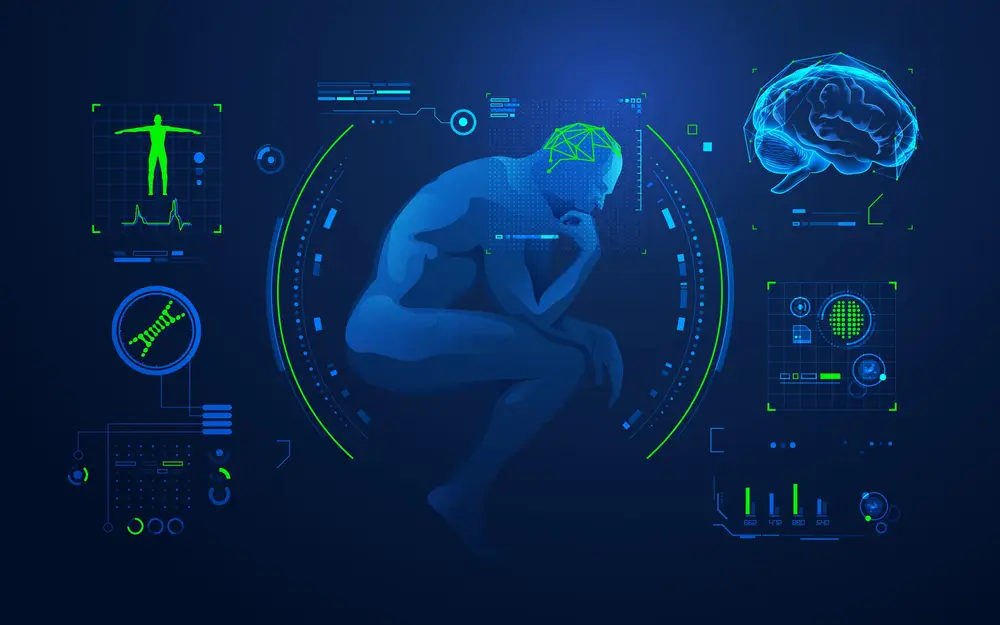Marijuana, or cannabis, is a controversial topic in many parts of the world. How marijuana affects the human body is still being studied and learning to be understood today. Certain factors can determine how marijuana affects a person. Understanding these factors can help individuals make informed decisions about using marijuana responsibly. Whether you have a medical card or are a recreational user, you should know how marijuana may affect you.
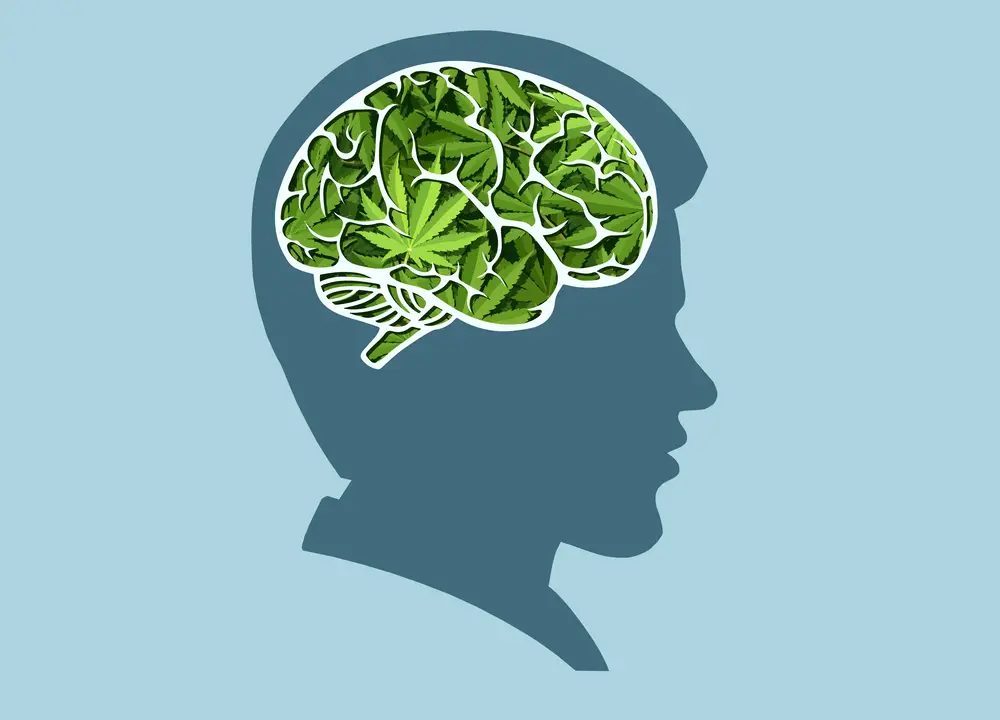
Marijuanas Mental Effects
- Intoxication/Get high (THC stimulates neurons in the reward system to release dopamine)
- Brain- some people can focus better after smoking pot, and some find it difficult to concentrate, problem-solve, learn, or remember.
- Mood changes
- Altered sensations (colors)
- It Makes You High
- It Can Increase HeartBeat (can increase 20 to 50 beats or more up to 3 hours after consuming it)
- Some people may get anxious or paranoid.
- May worsen symptoms of those diagnosed with psychosis and schizophrenia.
- Appetite improvement (the munchies)
- Potential for Addiction- approximately 10% of adult marijuana users gets hooked.
- High doses can cause delusions or hallucinations.
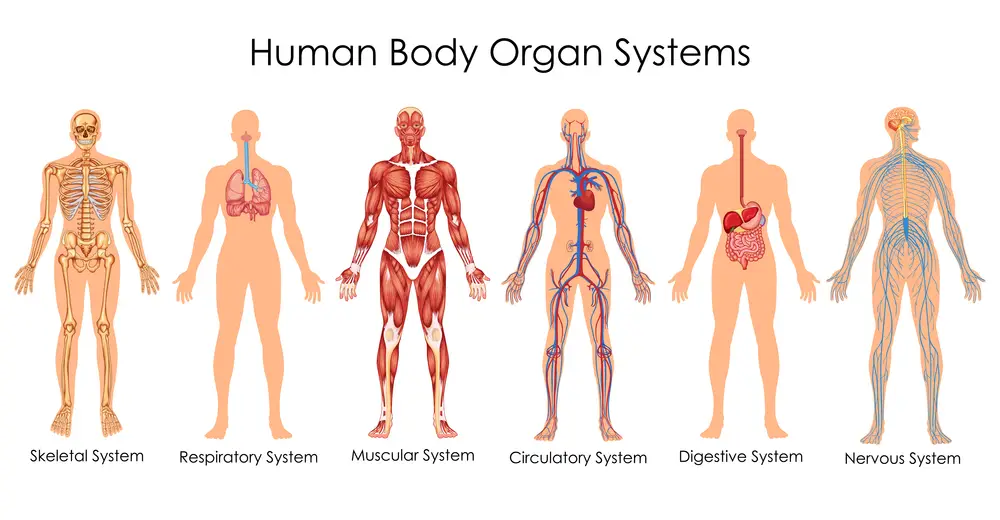
Physical Effects of Marijuana
- Lung inflammation- smoking weed may inflame your lungs with some consumption methods like smoking joints or blunts.
- Dry mouth, also called “cottonmouth.”
- Reduced Eye pressure potentially ( glaucoma)
- Chronic Pain – reduces pain from nerve damage (neuropathy), arthritis, and muscle spasms, among other causes.
- Multiple Sclerosis (reduction in muscle spasms and nerve pain as well as better sleep)
- Helps Reduce Inflammation (cannabinoids reduce swelling of some body tissue)
- It helps eliminate or reduce Seizures (FDA-approved drug called Epidiolex made from cannabidiol (CBD) for rare forms of childhood epilepsy, Lennox-Gastaut syndrome, and Dravet syndrome.
- Stomach- helps improve symptoms of Irritable Bowel Disorders and reduces nausea)
- Frequent use may cause a persistent cough and increased amounts of phlegm.
- Cannabinoid Hyperemesis Syndrome may occur with frequent cannabis use leading to nausea and vomiting, dehydration, and may even require medical attention.
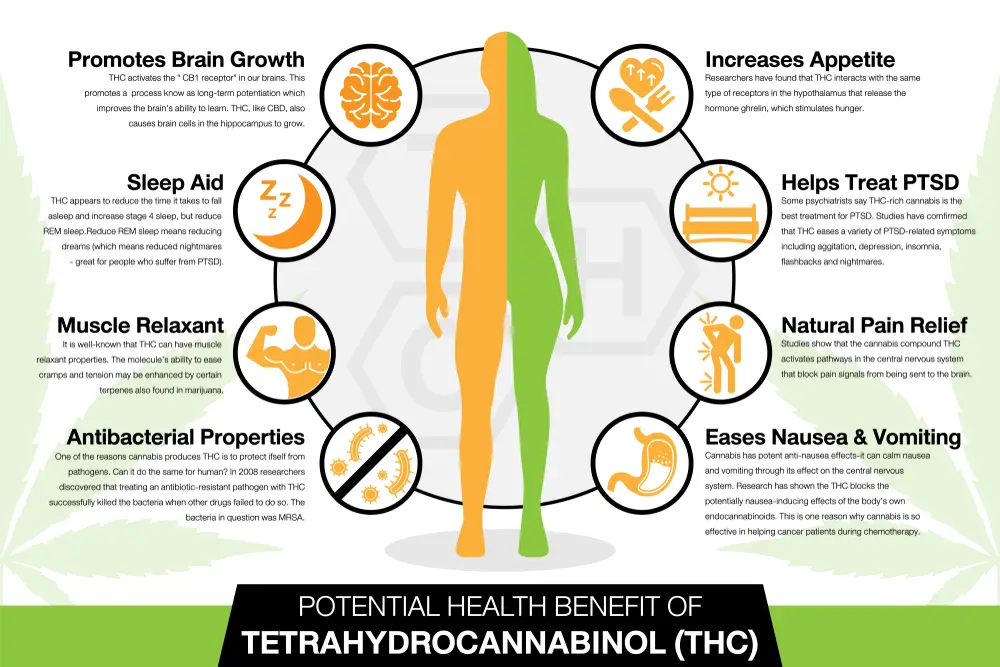
Marijuana research
In a major study, medical cannabis proved to be an effective solution for those suffering from pain, providing substantial relief for most that took the drug. Most notably, participants reported a 64% relative decrease in their pre-treatment pains of 7.8 – reducing it to 2.8 post-treatment! Stress and anxiety were among the other benefits mentioned by 50%, 45%, 12%, 10%, and 9% of respondents, respectively; insomnia is the most commonly cited secondary symptom, as improved appetite and decreased nausea too!
Amount and Potency of THC in Marijuana
The most critical factor determining how marijuana affects the human body is the amount of tetrahydrocannabinol (THC) present in a particular strain of cannabis. THC is one of the main psychoactive chemicals present in cannabis and is responsible for producing its characteristic “high” feeling. Different cannabis strains have varied levels of THC, meaning some types will produce more intense physical and mental effects than others.
It’s important to remember that when choosing a strain of cannabis, you should always research its potency, so you know what to expect from it. All marijuana dispensaries should have labels on marijuana products that tell you the potency of cannabinoids, especially THC. Unfortunately, studies show that their labels aren’t precisely accurate. Unlike pharmaceutical regulations, the cannabis industry lacks proper labeling regulation.
- Pill or tablet form
- Vaporize
- Tincture
- Smoke
- Edibles
- Dabbing
- Topicals creams, balms, or salves
- Cannabis transdermal patches
How marijuana is consumed determines how fast you feel the effects and how long they’ll take to wear off. Smoking or vaping cannabis is among the most common methods because the results are felt immediately, and they wear off faster than other methods, such as edibles or tinctures. Products consumed orally also have more intense effects and last longer.

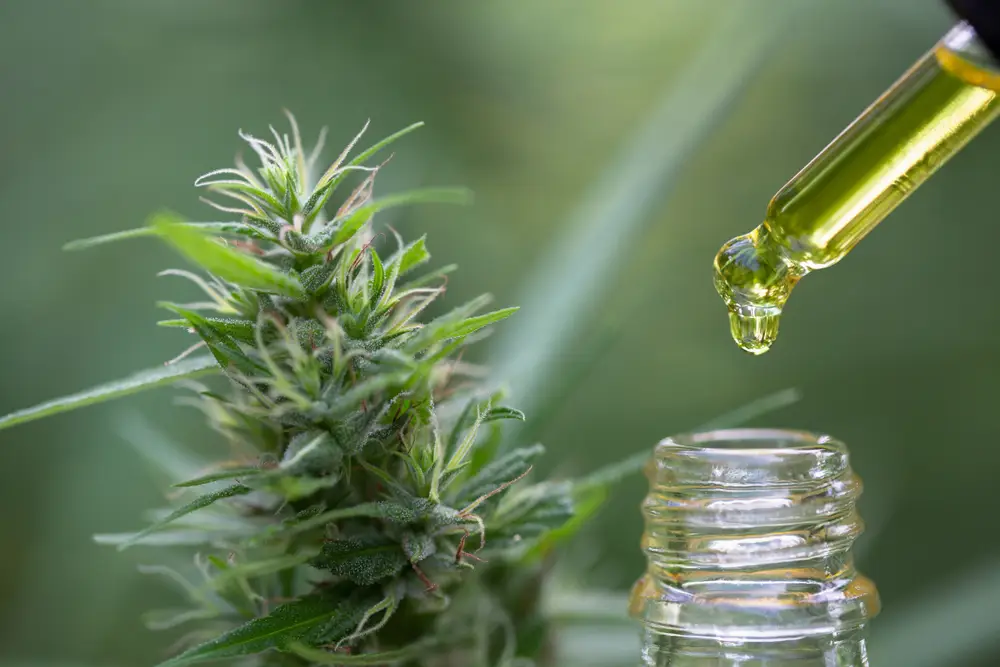
Personal Tolerance Level
Finally, each person’s tolerance level significantly determines how marijuana affects them personally. Someone with a high tolerance may be able to consume more significant amounts without feeling overly intoxicated, while someone with a low tolerance might only need minimal amounts before they start feeling the effects. If two people consume identical quantities and types of cannabis, their experiences may differ significantly due to their tolerance levels. The rule of thumb if your going to use cannabis is to start slow or with a low dose.
Cannabis is emerging as the premier first-line treatment option for treating chronic pain. It has an unparalleled safety record that no other known medication can provide without concern about adverse effects or overdosing.
In conclusion, several factors determine how marijuana affects a person, including the amount and potency of THC present in a particular strain, how they choose to consume it (smoking/vaping vs. edibles), and their tolerance level. By understanding these factors, individuals can use marijuana responsibly and safely enjoy its potential benefits while avoiding unwanted side effects or health complications.


